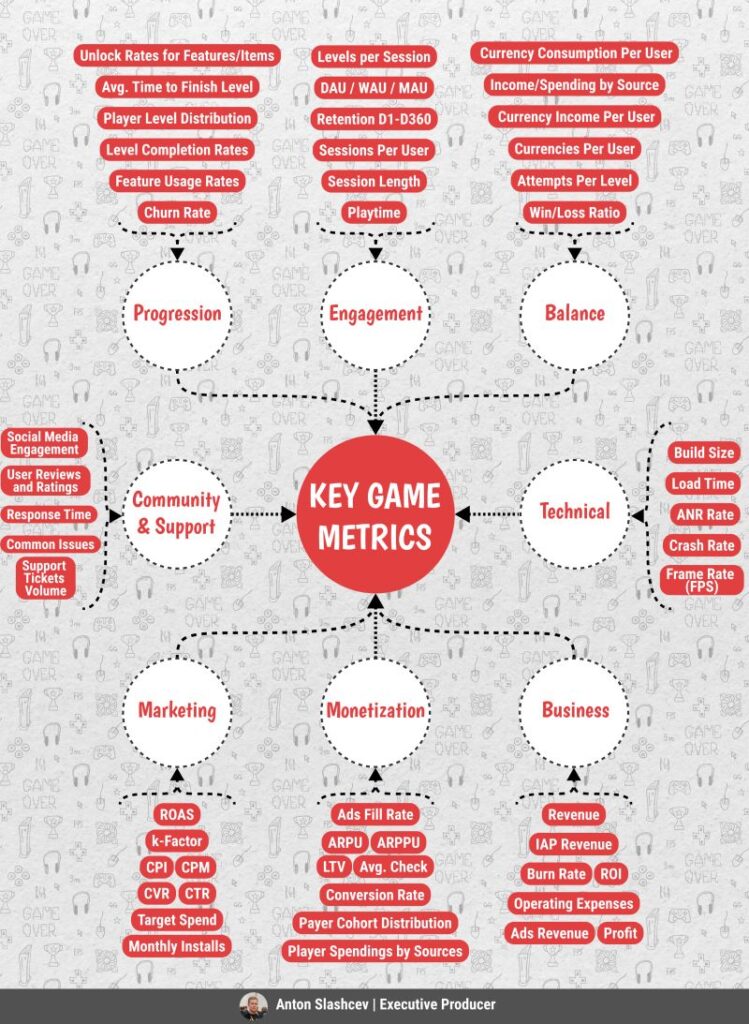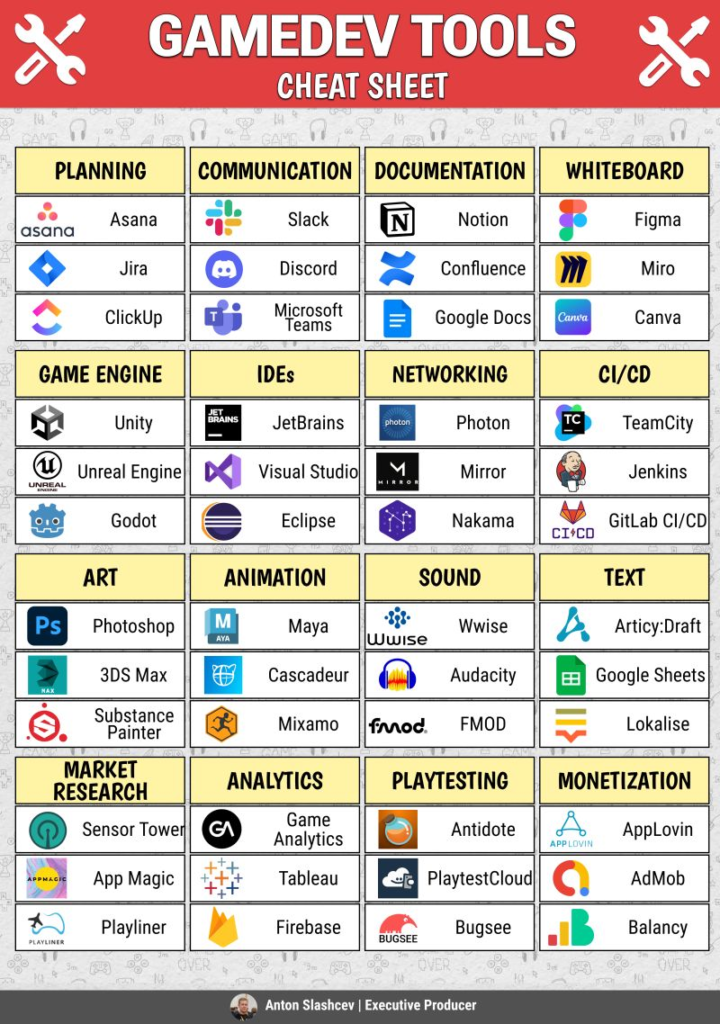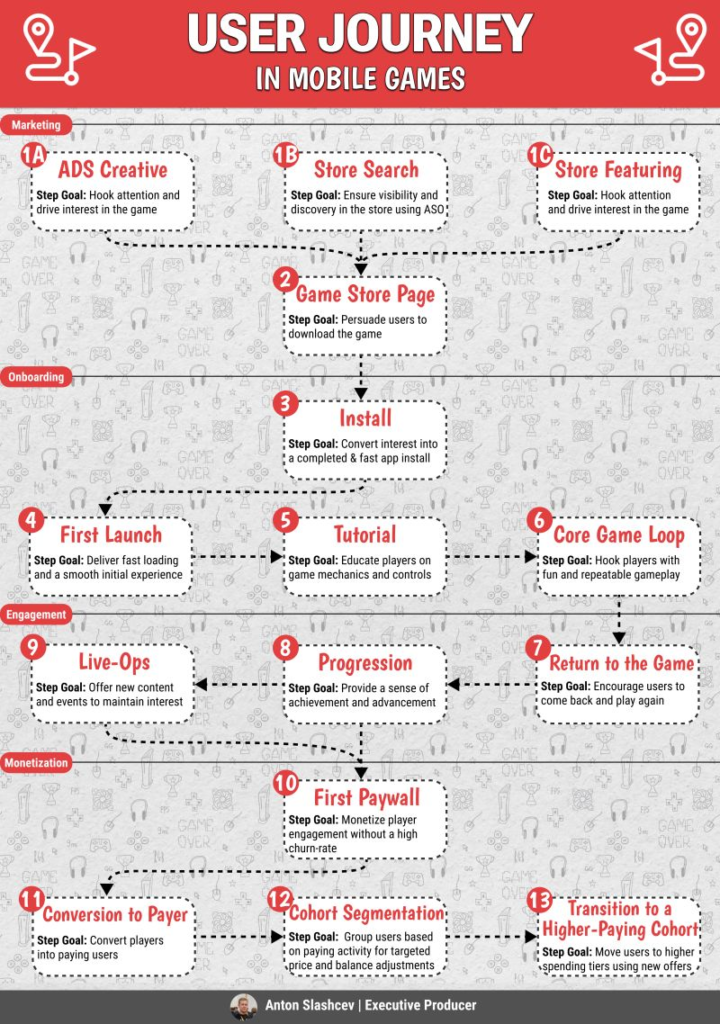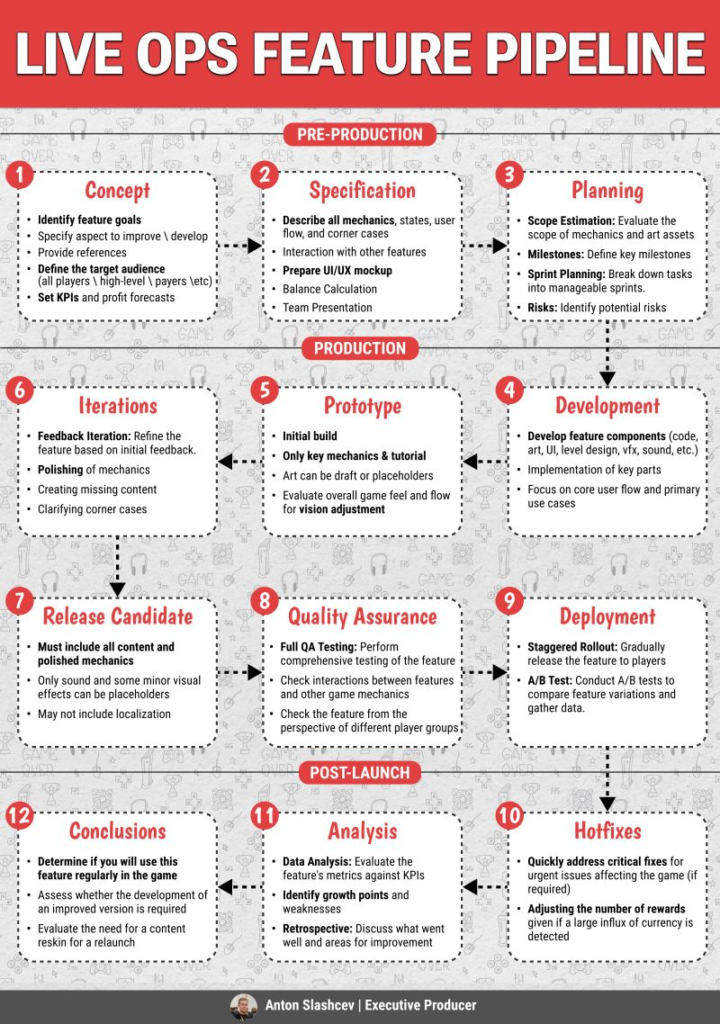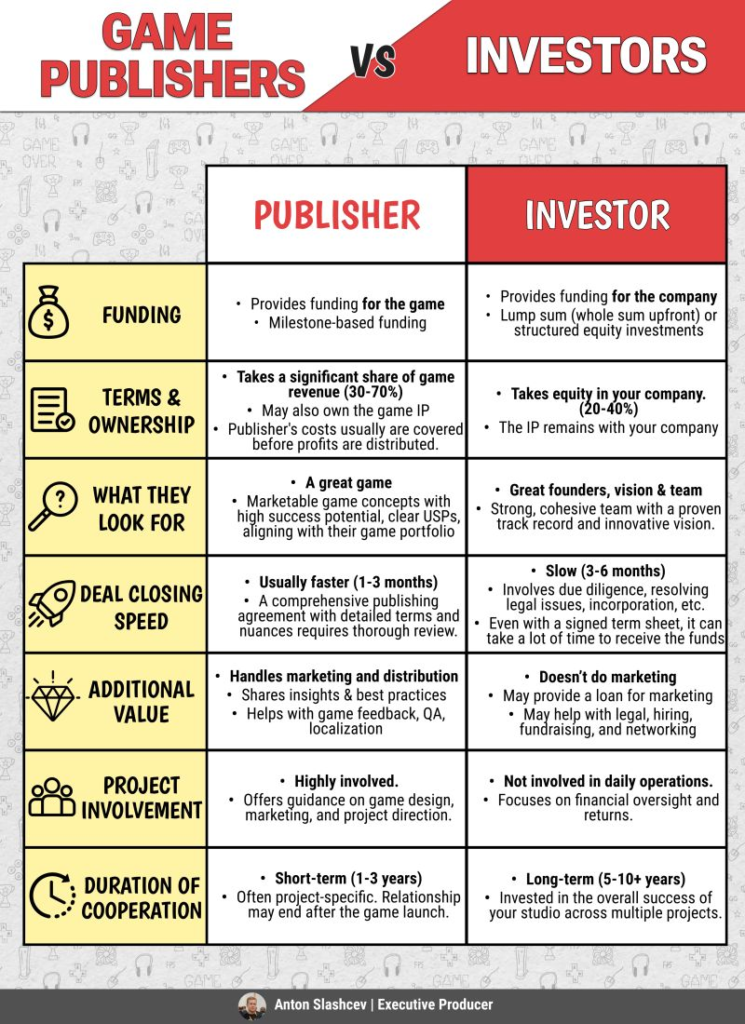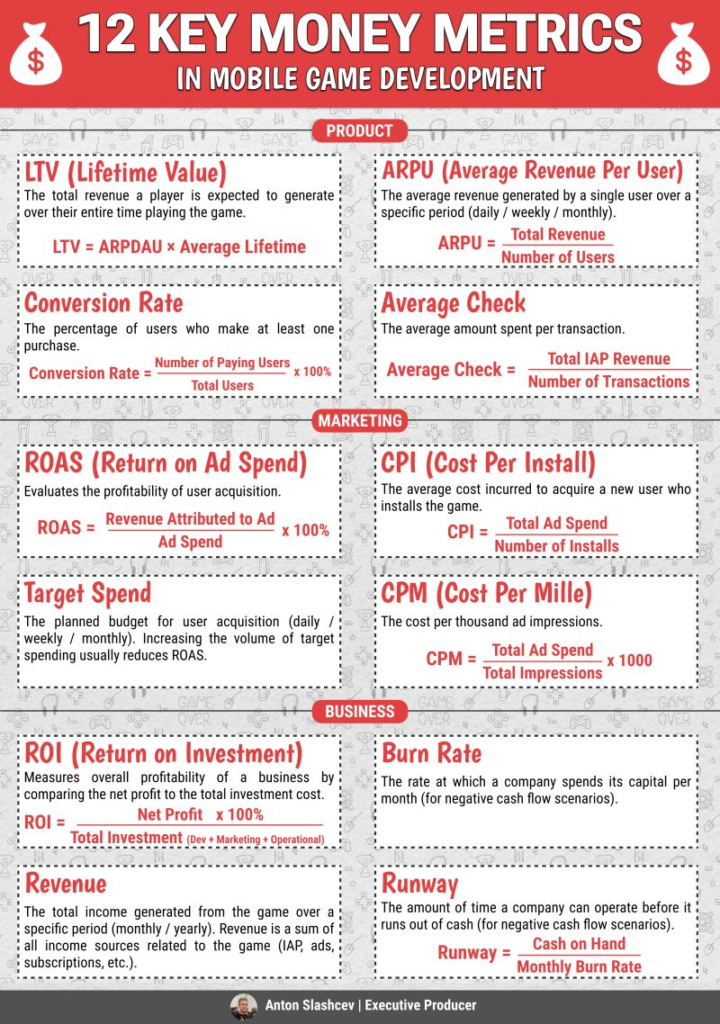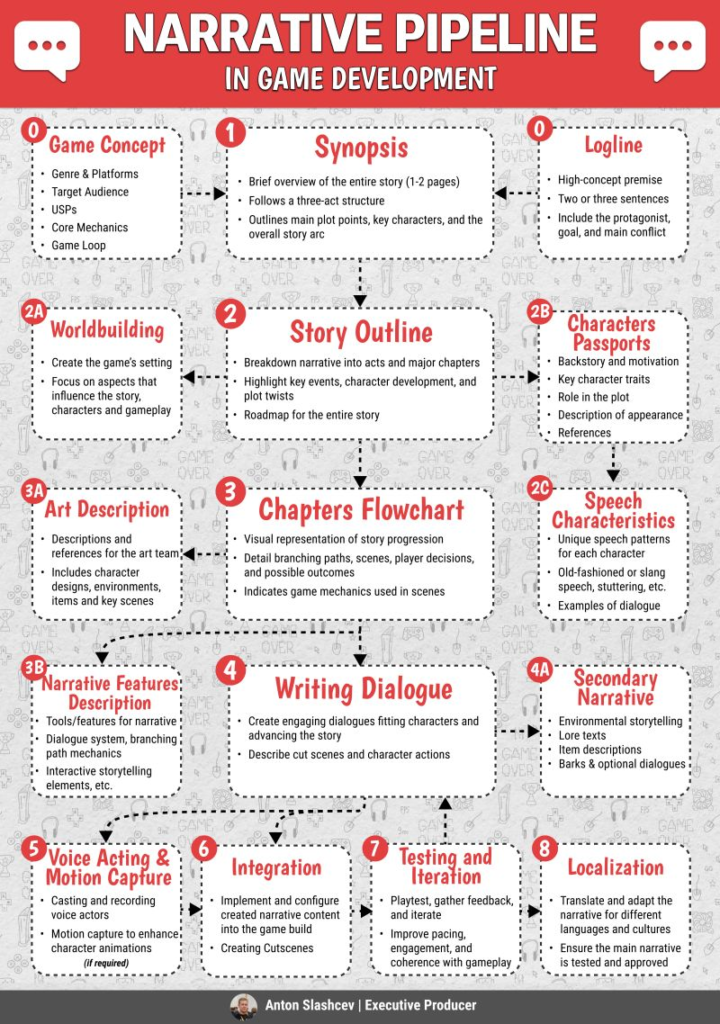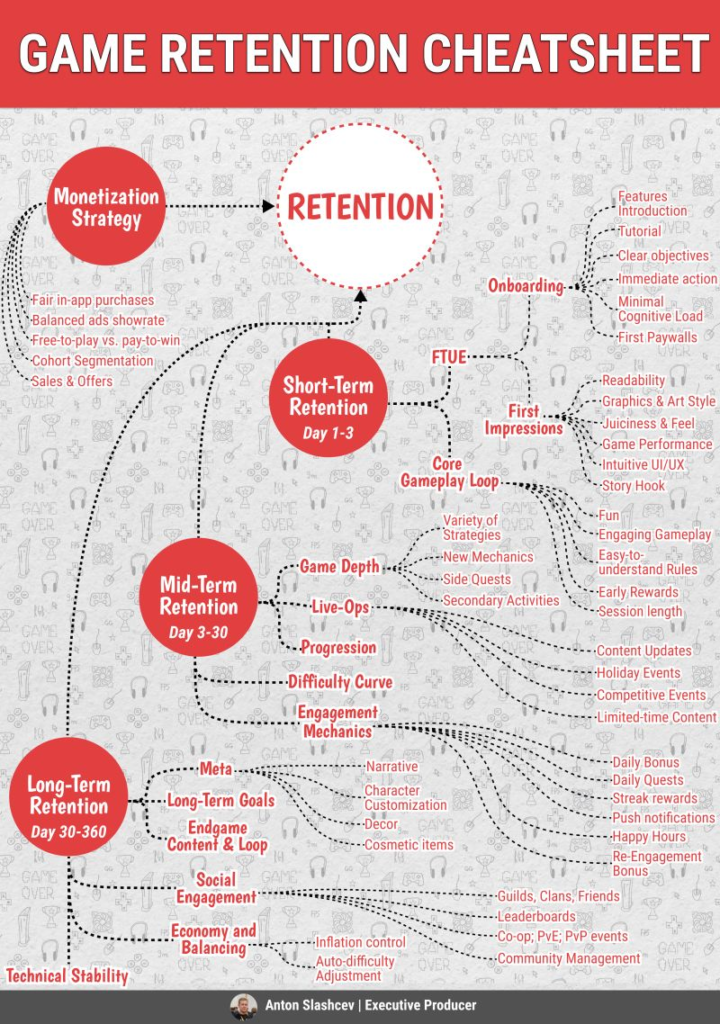All Key Game Metrics In One Place
Here is the list of all crucial metrics to track: Progression: - Unlock Rates for Features/Items- Avg. Time to Finish Level- Player Level Distribution- Level Completion Rates- Feature Usage Rates- Churn Rate Engagement: - Levels per Session- DAU / WAU / MAU- Retention D1-D360- Sessions Per User- Session Length- Playtime Balance: - Currency Consumption Per User- Income/Spending by Source- Currency Income Per User- Currencies Per User- Attempts Per Level- Win/Loss Ratio Technical: - Build Size- Load Time- ANR Rate- Crash Rate- Frame Rate (FPS) Community & Support: - Social Media Engagement- User Reviews and Ratings- Response Time- Common Issues- Support Tickets Volume Marketing: - ROAS- k-Factor- CPI / CPM- CVR / CTR- Target Spend- Monthly Installs Monetization: - Ads Fill Rate- ARPU / ARPPU- LTV / Avg. Check- Conversion Rate- Payer Cohort Distribution- Player Spendings by Sources Business: - Revenue- […]


